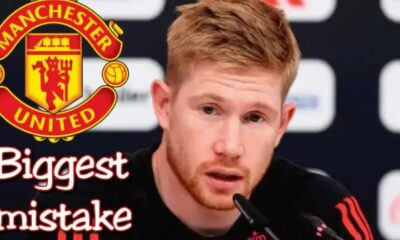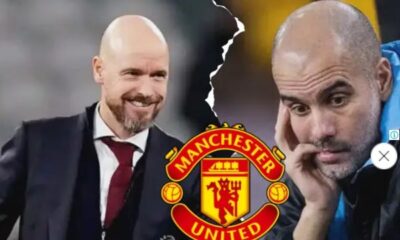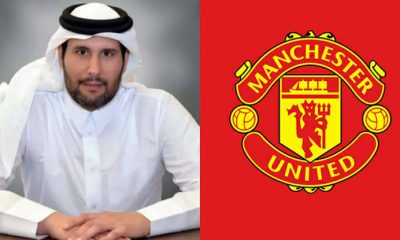Liverpool
Liverpool chairman left in tears after striking worst deal in club history

Liverpool chairman burst into tears after agreeing worst deal in club history

Paul Gorst reflects on the tenure of hated Liverpool owners Tom Hicks and George Gillett when the Reds were on the brink of collapse
With tears in his eyes, David Moores handed over the family silverware to Tom Hicks and George Gillett.
As the club seemed to teeter from one PR issue to the next, angry fans continued to protest the absentee owners.
Dr Rogan Taylor, founder of supporters group ShareLiverpoolFC, wrote in August 2008: “I am embarrassed by what is happening at my club, at least since the American takeover.
“There are about a dozen clubs around the world that have this real combination of local and global strength. But it is a dangerous situation.
“This club is more vulnerable now than it has been in the 47 years I have watched the club. It’s a house of cards and a gust of wind can blow it up.”
Benitez continued to keep the Reds at the top of the game, with Liverpool making their most credible title challenge under his leadership in the 2008/09 season.

But while Steven Gerrard, Fernando Torres and company delighted fans with an exciting campaign, things fell apart very quickly off the pitch.
Christian Purslow was appointed chief executive in the summer of 2009 and tasked with finding a £100m investment to satisfy creditors when Xabi Alonso was sold to Real Madrid for £30m.
His replacement, Alberto Aquilani, arrived for just over half of that £18m fee during what would prove to be a turning point for Benitez at Anfield as results plummeted.
Hicks and Gillett were then warned that their ownership of the Reds would come under “significant doubt” if they did not refinance their debts to the club in August 2009 after the formation of their parent company, Kop Holdings suffered a loss of £42.6 million. In January 2010, Liverpool fan Stephen Horner forwarded a copy of an ECHO article to Reds board member Tom Hicks Jnr. The game, which revolved around disability, had to pressure Benitez due to financial problems resulting from mismanagement by club owners.
Horner invited Hicks Jnr to comment and received a one-word response: “Idiot.” This was followed by Hicks Jnr, who wrote: “B*** me, f*** face. To hell I’m sick of you.”

The fallout saw Hicks Jr. removed from the board, but that was just the tip of the iceberg for hated owners, who were virtually non-existent at the turn of the last decade. In April 2010, in the face of overwhelming criticism, anger from Reds fans around the world and, more relevant to them, crippling financial difficulties, Hicks and Gillett hired British Airways chairman Martin Broughton to oversee the sale of the Liverpool F.C.
Once again Liverpool were looking for a buyer.
And they would find one in September, when after a scuffle in the High Court and moves in the Liverpool boardroom reminiscent of something from HBO’s hit drama Succession, FSG, then New England Sports Ventures, by John Henry of the High Court in London after triumphantly signing an agreement.
The FSG era had officially begun – and the living nightmare that had engulfed Liverpool since 2007 was officially over.
It was February 2007 and Liverpool FC had just changed hands with Moores, a longtime Reds fan and majority shareholder, finally completing the search for a buyer that had begun some three years earlier.
“It’s very hard to imagine that it won’t be my club anymore,” he said at the time. “Nevertheless, I leave it in good hands.
“They’re in it for the long haul because they involve their sons so they can plan for the future.”
History would, of course, prove those words to be hopelessly wrong, but Moores had a deep feeling that he had made the right decision at the time. Indeed, he was not alone, with the pair gobbling up stakes in the club until they announced on this day in 2007 that they had acquired 98% of the club and intended to complete a full takeover of the club with expropriation of the remainder actions.

Weeks earlier, Hicks and Gillett were able to respond to the media at a packed Anfield, just a week after Dubai International Capital found out they were not going to buy the club.
“The spade must be driven into the ground within 60 days,” the plans for a brand new stadium read. The owners had taken out a £350m loan from the Royal Bank of Scotland and Wachovia.
Of that sum, £105m was immediately paid into the club’s books, with the remaining £245m taken over by Kop Holdings, the company set up by the new owners when they bought the club. By the end of their reign, Liverpool were reported to be paying around £100,000 a day in interest as the threat of administration grew closer.
The language of both Hicks and Gillett, in 2007, more than hinted that they were relatively new to football, but with a portfolio of teams that included the Montreal Canadiens, Dallas Stars and Texas Rangers, the American duo had extensive experience in others play sports. at least.
However, Hicks had already been burned in the football world. In 1999, he teamed up with Cruzeiro and Corinthians in Brazil before leaving four years later.

After legal wrangling and financial troubles, Hicks walked out without fulfilling his promise of a new stadium. Unfortunately, history would repeat itself at Anfield.
But in February 2007, few could have predicted how disastrous the next three and a half years would be for the Reds off the pitch.
Rafa Benitez was backed in the market with Hicks and Gillett during his first transfer window. Seeming frustrated after his side’s Champions League final loss to AC Milan in Athens, the Liverpool manager knew investment was needed.
Hicks and Gillett donated money where they were, but it wouldn’t be capital from their own pockets that would be used to bolster the roster. In November of that year, the cracks began to appear. Benitez went public with a surreal press conference when his dry answer to every question was that he was solely focused on training his players.
A total of fifteen times Benitez gave the same answer after privately learning that AC Milan’s Kahka Kaladaze was banned from Hicks and Gillett.
In January 2008, Hicks and Gillett hired Jurgen Klinsmann to succeed Benitez as manager, despite the manager’s immense popularity among Liverpool fans.
“We tried to negotiate an option as an insurance policy to appoint him [Klinsmann] as manager in case Rafael goes to Real Madrid or other clubs that have been rumored in the press,” he said. Hicks later told ECHO.
“We were afraid of losing Rafa, we had information that he was going to Real Madrid and we had the opportunity to speak to Jurgen as a potential candidate, so we had a meeting with the guy.
Soon after, the Liverpool supporters group Spirit of Shankly was formed at the Sandon Pub – exactly where the club was founded in 1892 – to vehemently oppose American owners and the direction their club was taking under the couple. “The protests encompassed many aspects, from being left in the ground and in the main grandstand parking lot to mass marches and a big dig when we put a shovel in the ground in Stanley Park, which Hicks and Gillett hadn’t done,” they said .
Gillett had actually met SOS minutes before a planned 2008 march was due to take place. He insisted the club had a secure financial footing and attributed the delays around the new stadium to a financial crunch brought on by its banks and the tight credit. .
Around 4,000 SOS members marched from the Liverpool Supporters Club to the ground for a 2-1 win over Manchester United.
“Our message is that we don’t want Hicks and Gillett,” SOS spokesman Jay McKenna said. “They should do the right thing and leave our football club.”
An old flame from Dubai International Capital threatened to rekindle before it became apparent that the relationship between Hicks and Gillett was increasingly disrupted.
In May of that year, construction on a new stadium was halted as Hicks and Gillett were at war and unable to raise the £300m needed for development.
More than a year had passed since the 60-day deadline they had set themselves to set foot inside the club for the first time.
Several years later it was revealed that Liverpool had spent a whopping £35m on planning, legal and administrative costs relating to the unbuilt site which would house their new stadium.
-

 Manchester United10 months ago
Manchester United10 months agoMason Greenwood Has Confirmed His Departure From England For The white Country’s National Team
-

 Manchester United12 months ago
Manchester United12 months ago‘I pleaded with Him to join Arsenal but He chose Man united over us’: William Saliba confirmed His £45m international teammate have agreed personal terms to join Man united over Arsenal
-

 Manchester United12 months ago
Manchester United12 months ago‘He is making the biggest mistake in his career’: Kelvin De Bruyne CONFIRMED his £50m international teammate have agreed personal terms to join Man united ahead of Man City
-

 Uncategorized10 months ago
Uncategorized10 months agoMan United news LIVE: Glazer takeover price’met,’ Sheikh Jassim reacts, Jadon Sancho swap agreement
-

 Manchester United12 months ago
Manchester United12 months agoMan city boss Pep Guardiola is UNHAPPY as €65m European star tells him nobody can stop him from joining Erik Ten Hag’s Man united this season.
-

 Manchester United1 year ago
Manchester United1 year agoCelebration at Old Trafford Qatar’s Sheikh Jassim arrives at Man United to sign the takeover deal (deal 100% done by Fabrizio Romano) unverified.
-

 Manchester United11 months ago
Manchester United11 months agoMonday morning done deal: Man united completed the signing of £50m superstar as potential replacement for Erikson,all paperwork work signed last night,player set to undergo his medical at London Carrington today
-

 Manchester United10 months ago
Manchester United10 months agoMan United takeover ‘will happen,’ says Sheikh Jassim, who is willing to pay another £2 billion to complete the deal.
